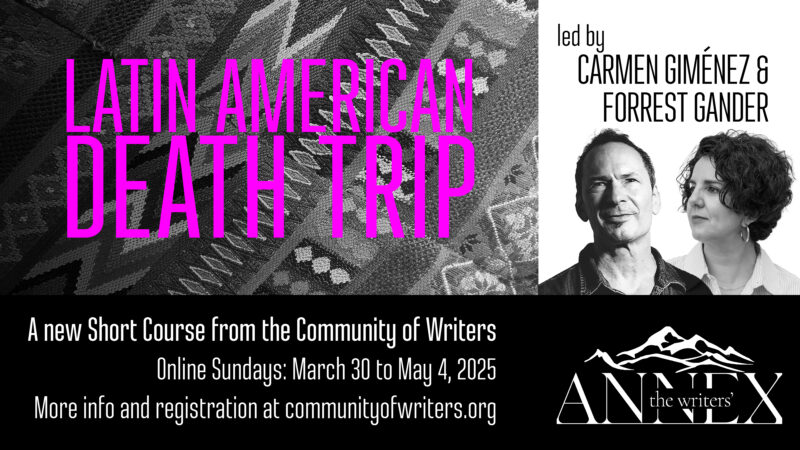
Death is the subject of many of the greatest (most moving, innovative, funny, haunting, political, oneiric) Latin American poems of the 20th century, from José Gorostiza’s Death without End to Gabriela Mistral’s “Death Sonnets,” from Xavier Villaurrutia’s Nostalgia for Death to María Rivera’s “The Dead.
What can we learn from that body of poetry that might be generative for our own thinking, feeling, writing? Many philosophers tell us that there is a signal connection between death and “the meaning of life.” What particularities of culture, gender, sexuality, age, faith or experience might account for the visionary clarity of death as constant companion or permeable border, etc. in Latin American poetry? Why are death poems so common in those cultures? Is it connected to traumatic resonances from the conquest? Does it go back to Maya, Aztec, or Incan cultural traditions? With what kinds of syntax, sound, image, structure, and vocabulary is death treated? How different are the cultural contexts from country to country? And why did we once think that only men seem to write them?
